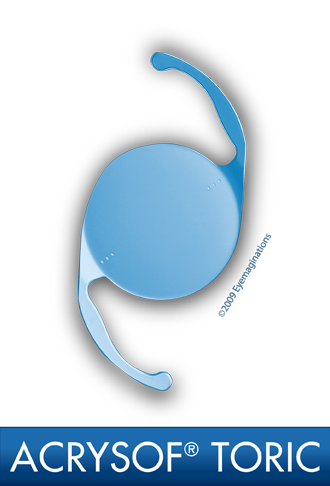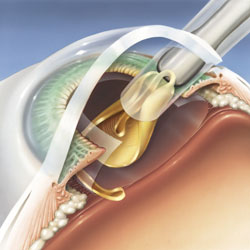What is Cataract?
Many patients think that a cataract is actually a film that spreads over the surface of the eye. Some patients are even concerned that cataracts will make them go blind. In reality, a cataract is a naturally occurring change in the eye that is a gradual clouding that makes vision less sharp over time. Patients typically report the sensation of looking through the wax paper; they often have trouble driving at night, and colors seem very dull. As you already know, the eye works much like a camera, and as a camera, the lens must be very clear to see well. A healthy transparent lens absorbs light and accurately focuses it onto the retina, providing a crisp, clear image. As the aging process takes hold of our eyes, proteins begin to clump together, forming opaque clusters. Over time these protein deposits eventually cloud the entire lens allowing significantly less to pass through. The small amount of light that does make it through is diffused or scattered, leaving vision defocused. These protein clusters can also change the color of the normally clear lens, making it a yellowish-brown color. The only method of treating cataracts is with cataract surgery where your natural lens is replaced with an intraocular lens implant.
What is Cataract Surgery?
Cataract surgery is a simple procedure with an excellent success record. The clouded natural lens is replaced with an artificial lens called an intraocular lens (IOL). It is done on an outpatient basis with a topical anesthetic that will make it a painless procedure. One eye is done at a time, with a short healing period in between. After making a very small incision outside your field of vision, your eye surgeon will insert a tiny probe and use ultrasound to break up the clouded natural lens. With suction, the pieces are easily removed, and through the same incision, the IOL is inserted and positioned correctly. After the cataract is removed, a cataract surgeon is ready to implant a man-made intraocular lens. This is a crucial point of understanding for patients. Patients can either have a monofocal Medicare lens, which will only correct vision for one distance or they can opt for an upgrade premium lens implant that can reduce or eliminate their need for glasses after cataract surgery. Please feel free to review some premium lens implant options:
Understanding Intraocular Lenses
The intraocular lens is a foldable lens that slides through a tube-like a fruit roll-up and unfolds in the capsular bag. The surgeon may center the new lens with the lens capsule if necessary. Once the lens is centered, the surgery is complete. In most cases, no stitches are required to seal the incision due specifically to the 3- millimeter size. This is why it is called micro-surgery by many eye doctors. Having a discussion with your cataract surgeon on a choice about the best intraocular lens implant for you is suggested. If you have questions regarding lens implants, please feel free to contact our office, and we will be happy to discuss your options.


What are the risk factors for Cataracts?

By the age of 65, most Americans will have developed cataracts, which occur when your human lens becomes clouded to such an extent that it affects your vision and quality of life. This condition typically occurs with age, but can also result from trauma, disease, and use of certain medications.
Several groups have an increased risk for developing cataracts and eventually need cataract surgery. Examples include:
- Smokers
After Cataract Surgery
Patients are typically concerned about the cataract surgery recovery process. Most cataract eye surgeons provide the best quality care and thoroughly explain what you can expect after cataract surgery. Recovery from cataract surgery is generally very quick. Most patients obtain better vision within the first 24 hours of the procedure. Itching and mild discomfort are normal after cataract surgery. Some fluid discharge is also common. Your eye may be sensitive to light and touch. If you have discomfort, your doctor can suggest treatment. After one or two days, any moderate discomfort should disappear.
For a few days after surgery, your doctor may ask you to use eye drops to help to heal and decrease the risk of infection. Ask your cataract eye doctor about how to use your eyedrops, how often to use them, and what effects they can have. You will need to wear an eye shield or eyeglasses to help protect your eye. Avoid rubbing or pressing on your eye.
In most cases, healing will be complete within eight weeks. Your doctor will schedule exams to check on your progress. Each person heals differently, so it is important to discuss the cataract surgery recovery with your eye doctor.